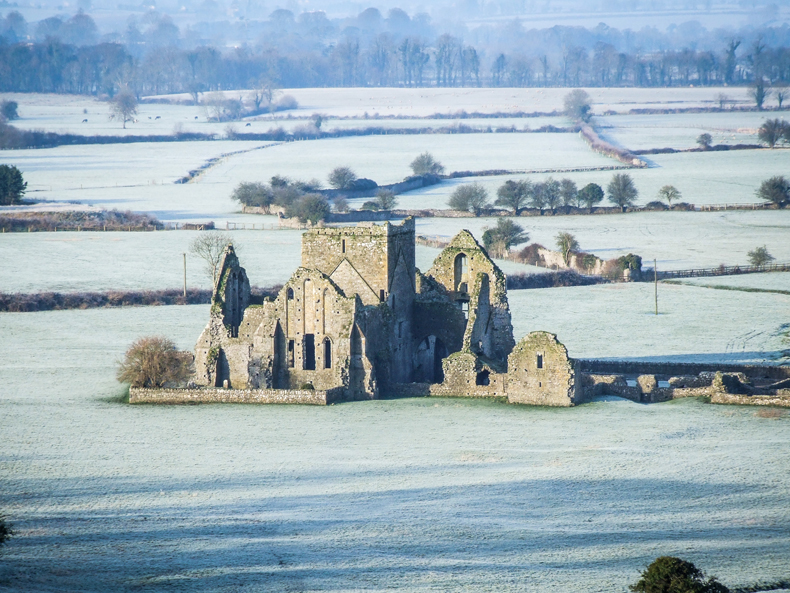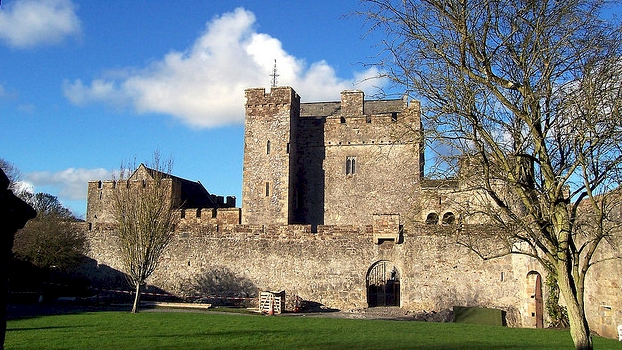The Rock of Cashel is one of Ireland's most spectacular archaeological sites, a prominent green hill, banded with limestone outcrops, rising from a grassy plain and bristling with ancient fortifications. It's a five-minute stroll from the town centre up to the Rock, from where fantastic views range over the Tipperary countryside. Cashel town is also located within easy reach of all of the following attractions.
The Rock of Cashel (Irish: Carraig Phádraig), also known as Cashel of the Kings and St. Patrick's Rock, is a historic site located at Cashel, County Tipperary, Ireland. The Rock of Cashel was the traditional seat of the kings of Munster for several hundred years prior to the Norman invasion. In 1101, the King of Munster, Muirchertach Ua Briain, donated his fortress on the Rock to the Church. The picturesque complex has a character of its own and is one of the most remarkable collections of Celtic art and medieval architecture to be found anywhere in Europe. Few remnants of the early structures survive; the majority of buildings on the current site date from the 12th and 13th centuries.
Hore Abbey (also Hoare Abbey, sometimes known as St.Mary's) is a ruined Cistercian monastery near the Rock of Cashel, County Tipperary, Republic of Ireland. 'Hore' is thought to derive from 'iubhair' – yew tree. The former Benedictine abbey at Hore was given to the Cistercians by Archbishop David MacCearbhaill (in 1270), who later entered the monastery. He endowed the Abbey generously with land, mills and other benefices previously belonging to the town. Hore Abbey is distinctive among Irish Cistercian monasteries in that the cloister lies to the north. The siting of the Abbey, with the Rock of Cashel close by to the north, may explain this departure from the usual arrangement.
Cashel Folk Village has a history that dates back almost 400 years, while historical artefacts on site date back as far as 20,000 years. First, to its most recent history- Bernard Minogue, son-in-law of Martin O Dwyer, is the Curator of the Museums. Martin himself originally set up Cashel Folk Village/Museums, and it is to his eternal credit that it is now internationally renowned as a major historical visitors site.
The heritage centre, located on the main street in Cashel, is a great introduction to the town.
A large scale model of the town in the 1640s highlights the lesser known treasures of the town. Audio commentary is in French, Spanish, German, Italian, Irish and English. There is also the Charters of Cashel, King Charles II 1663 and James II 1687, on permanent display.
Admission to the Cashel Heritage Centre is free.
An imposing 13th-15th Century structure, Cahir Castle was skilfully designed by Conor O’Brien to be a state-of-the-art defensive castle. Appearing to grow from the actual rock on which it stands, the castle has been the scene of sieges and bombardments for centuries. The powerful Anglo-Norman family, the Butlers, came into the possession of the castle in 1375.
The Swiss Cottage, just outside the heritage town of Cahir, is a cottage orné – a fanciful realisation of an idealised countryside cottage used for picnics, small soirees and fishing and hunting parties and was also a peaceful retreat for those who lived in the nearby big house.
Built in the early 1800s by Richard Butler, 1st Earl of Glengall, who, it is believed, managed to persuade world-famous Regency architect John Nash to design it. Originally, simply known as “The Cottage” it appears to have acquired its present name because it was thought to resemble an Alpine cottage.






